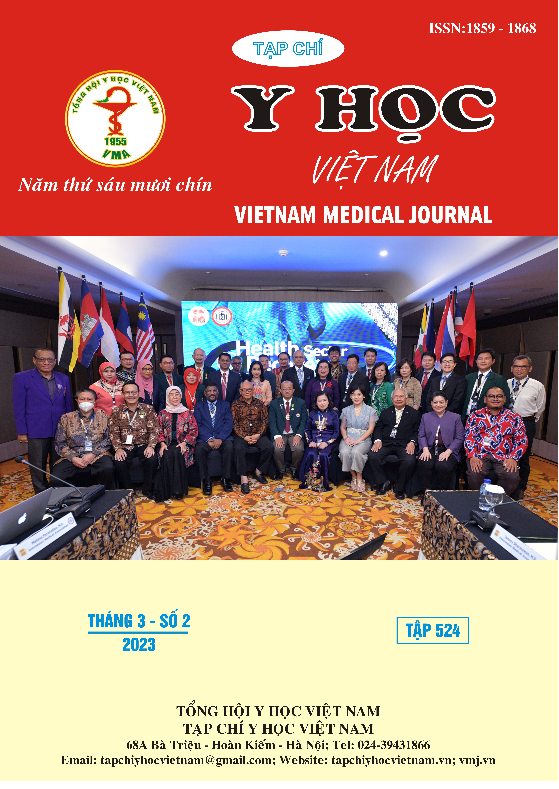RESEARCH ON THE USE OF DRUGS IN TREATMENT OF DIABETES MELLITUS TYPE 2 IN OUTPATIENTS AT LONG XUYEN CITY MEDICAL CENTER IN 2019
Main Article Content
Abstract
Introduction: Diabetes mellitus causes many dangerous complications, is the most common cause of cardiovascular diseases, blindness, kidney failure and amputation. Currently, in the world, there is no drug that can completely cure the disease, but only relieves the symptoms and complications caused by hyperglycemia. To find out the treatment as well as evaluate the use of drugs to treat diabetes mellitus type 2 in outpatients at the Health Center of Long Xuyen city, the study carried out the topic "Research on the use of drugs in treatment of diabetes mellitus type 2 in outpatients at Long Xuyen city medical center in 2019". Methods: A retrospective descreptive longitudinal follow – up study on 146 prescription/medical records of patients with diabetes mellitus. Patients were assessed at the start of the study and re – evaluated at 3 and 6 months. Results: Among 146 patients participating in the study, 53.52% were female, 46.58% were male, the comorbidities of the patients accounted for the highest percentage, hypertension (57.53%) followed by dyslipidemia (53.42%). Patients in the study sample had diabetes cases < 40 years old. Regarding the current situation of using drugs to treat type 2 diabetes mellitus: The main prescriptions are 03 groups of drugs: biguanide, sulfonylurea and insulin; The most commonly used 2-drug regimen (52.05%), in which the majority is metformin + sulfonylurea (45.20% - 50.68%); The regimens are changed a lot during the treatment period. The percentage of patients adding drugs accounted for the highest rate (26.03%); There were 05 cases of patients with GFR < 30 ml/min/1.73m2 contraindicated to metformin but still indicated to use metformin. Regarding the effectiveness of treatment after 6 months: Patients with poor glycemia control remained high (66.44%). Good HbA1c control increased from 32.88% to 73.29%; The majority of patients with good and acceptable BP control (79.45%); control blood lipid index accounts for a small percentage.
Article Details
Keywords
Diabetes mellitus, Diabetes mellitus type 2, Heath center of Long Xuyen City
References
2. International Diabetes Federation, WDD (2017). Resource: https://idf.org/our-activities/ world-diabetes-day/resources/122-wdd17-infographic-3-omen-and-girls-are-key-agents-in-the-adoption-of-healthy-lifestyles.html.
3. Phạm Hữu Tiến và cộng sự (2021). Nghiên cứu tình hình tiền đái tháo đường trên bệnh nhân tăng huyết áp và các yếu tố liên quan. Bình viện quận Bình Thạnh, Sở Y tế thành phố Hồ Chí Minh.
4. Hà Thanh Liêm (2013). Khảo sát sử dụng thuốc điều trị đái tháo đường típ 2 trên bệnh nhân ngoại trú tại phòng khám bệnh viện đa khoa khu vực Tháp Mười. Luận văn Dược sĩ chuyên khoa cấp I, Trường Đại học Dược Hà Nội.
5. Tôn Thất Thạnh và cộng sự (2019). Thực trạng đái tháo đường týp 2 ở người trưởng thành 30 - 69 tuổi và một số yếu tố nguy cơ liên quan tại thành phố Đà Nẵng năm 2018.
6. Lê Thị Thúy Quỳnh (2022). Phân tích tình hình sử dụng thuốc điều trị đái tháo đường típ 2 tại khoa khám bệnh – trung tâm y tế huyện Lâm Thao, tỉnh Phú Thọ. Luận văn Dược sĩ chuyên khoa cấp I, Trường Đại học Dược Hà Nội.
7. Tạ Lan Anh (2022). Phân tích tình hình sử dụng thuốc điều trị đái tháo đường típ 2 tại Khoa khám bệnh trung tâm y tế huyện Phù Ninh. Luận văn Dược sĩ chuyên khoa cấp 1, Trường Đại học Dược Hà Nội.
8. Vũ Văn Linh (2015). "Đánh giá tình hình sử dụng thuốc điều trị đái tháo đường típ 2 trên bệnh nhân ngoại trú tại bệnh viện đa khoa tỉnh Hà Nam". Luận văn thạc sĩ dược học, Trường đại học Dược Hà Nội, Hà Nội.


